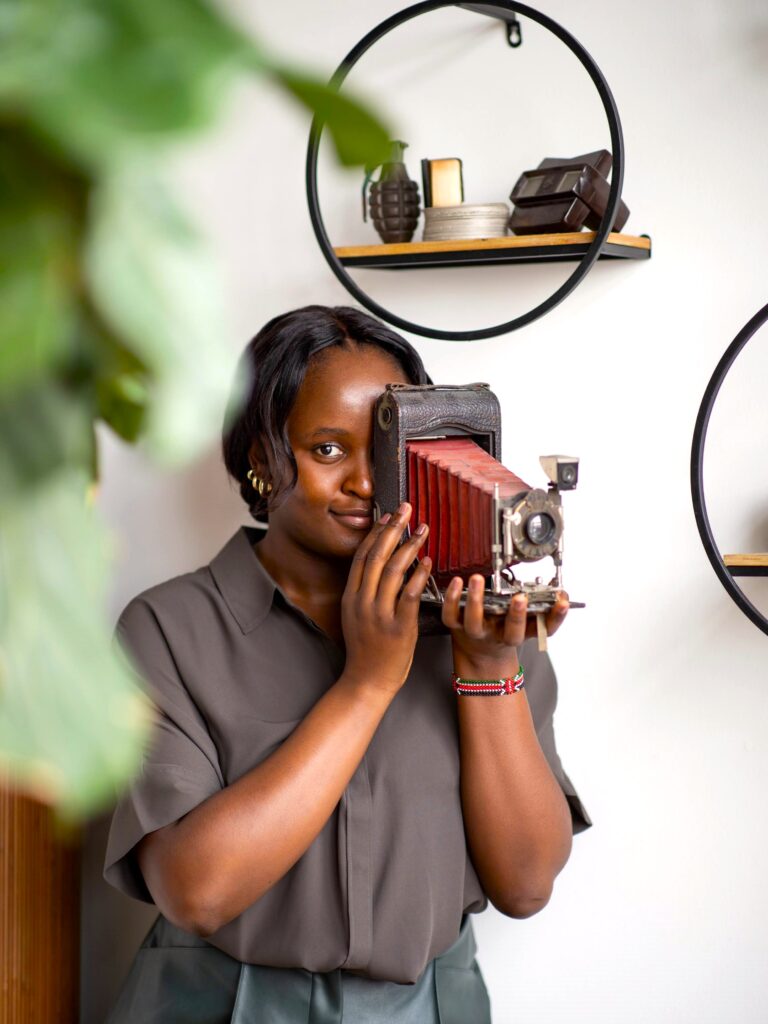KATHERINE JOHNSON
Katherine Johnson was an American Mathematician who calculated and analyzed the flight paths of many spacecraft during her more than three decades with the US space program. Her work was instrumental in the return of the Apollo astronauts from the Moon to Earth. She was the only girl selected when West Virginia decided to integrate its graduate schools in 1939. She graduated from the university with honors.
In 1957, she provided some of the Math for the 1958 document Notes on Space Technology, a compendium of a series of 1958 lectures given by engineers to the groups that formed the core of the Space Task Group, NASA’s first official foray into space travel. She did trajectory analysis for Alan Shepard’s May 1961 mission Freedom 7, America’s first human spaceflight. In 1960, she and engineer Ted Skopinski coauthored a report laying out the equations describing an orbital spaceflight in which the landing position of the spacecraft is specified. It was the first time a woman in the Flight Research Division had received credit as an author of a research report. In 1962, as NASA prepared for the orbital mission of John Glenn, Johnson was called upon to do the work.
Johnson received numerous awards and honors for her work: the Presidential Medal of Freedom in 2015; in 2016, Margot Lee Shetterly published Hidden Figures: The American Dream and the Untold Story of the Black Women Mathematicians Who Helped Win the Space Race, about the West Computers, including Johnson, Dorothy Vaughan, and Mary Jackson.
She died on Feb. 24, 2020 at 101 years old.
GRACE HOPPER
Grace Murray Hopper was an American Mathematician and rear admiral in the U.S. Navy who was a pioneer in developing computer technology, helping to devise UNIVAC I, the first commercial electronic computer, and naval applications for COBOL (common-business-oriented language. After graduating from Vassar College in 1928, Hopper attended Yale University (M.A., 1930; Ph.D., 1934). She taught mathematics at Vassar before joining the Naval Reserve in 1943.
She became a lieutenant and was assigned to the Bureau of Ordnance’s Computation Project at Harvard (1944), where she worked on Mark I, the first large-scale automatic calculator and a precursor of electronic computers. She wrote the first computer manual, A Manual of Operation for the Automatic Sequence Controlled Calculator (1946), which described how to operate Mark I and was the first extensive treatment of how to program a computer. She remained at Harvard as a civilian research fellow while maintaining her naval career. After a moth infiltrated the circuits of Mark I, she coined the term ‘bug’ to refer to unexplained computer failures.
Hopper designed one of the first compilers in 1949 and coined the word compiler. She worked on the design of UNIVAC I as head programmer. She retired from the navy as commander in 1966, but she was recalled to help standardize the navy’s computer languages. At the age of 79, she was the oldest officer on active U.S. naval duty when she retired again in 1986. In 2016, Hopper was posthumously honored with the Presidential Medal of Freedom.
ADA LOVELACE
Ada King, countess of Lovelace, was an English Mathematician, an associate of Charles Babbage, for whose prototype of a digital computer she created a program. She is considered the first computer programmer. Ada Lovelace discovered that a computer could follow a sequence of instructions—that is, a program. Even though she wrote about a computer, the Analytical Engine, that was never built, she realized that the computer could follow a series of simple instructions, a program, to perform a complex calculation.
She was educated privately by tutors and then self-educated but was helped in her advanced studies by mathematician-logician Augustus De Morgan, the first professor of mathematics at the University of London. Babbage only built a small part of the Analytical Engine, but Lovelace’s efforts have been remembered. The early programming language Ada was named after her.
In 1843, at age 27, she had come to understand the Analytical Engine- considered the first computer- well enough to publish the definitive paper explaining the device and drawing the crucial distinction between this new thing and existing calculators. The Analytical Engine, she argued, went beyond the bounds of arithmetic. She stated that it operated on general symbols rather than on numbers, it established “a link…between the operations of matter and the abstract mental processes of the most abstract branch of mathematical science.”
ANNIE EASLEY
Annie Easley was an American Computer Scientist, Mathematician and Rocket Scientist. She worked on Centaur technology at NASA — a high-energy rocket technology that uses liquid hydrogen and liquid oxygen to boost rockets into space. She also co-authored numerous papers about nuclear engines in rockets and she worked on solar, wind and energy projects.
She worked at NASA in 1955 when it was still called National Advisory Committee for Aeronautics (NACA).
Through her 34-year long career, she contributed to numerous programs as a computer scientist, inspired many through her enthusiastic participation in outreach programs, broke down barriers for women and people of color in science, technology, engineering, and mathematic (STEM) fields, and won the admiration and respect of her coworkers.
Easley began her career as a “human computer,” doing computations for researchers. This involved analyzing problems and doing calculations by hand. When human computers were replaced by machines, Easley evolved along with the technology. She developed and implemented code used in researching energy-conversion systems, analyzing alternative power technology—including the battery technology that was used for early hybrid vehicles, as well as for the Centaur upper-stage rocket.
ANGELICA ROSS
Angelica Ross is an American businesswoman, actress, transgender rights lawyer, and a self-taught programmer. She is the founder and CEO of TransTech Social Enterprises, a firm that helps employ transgender people in the tech industry.
At the age of 17, Ross told her mother about being gay but her mom didn’t take it that well and told her to commit suicide, or she will kill herself. So Ross thought to end her life and overdosed on medication but survived. Ross ran away from home and joined the U.S Navy.
Six months later, she requested and received an “uncharacterized” discharge under the “Don’t Ask Don’t Tell” policy then in force, after being harassed by drafted men who bullied her saying she is gay. She moved back home and made friends with a drag queen, who helped her began her gender transition. Her parents weren’t supportive of it and threw her out of the house. Ross moved to Hollywood and began working as a model until 2003. She then started a web development and graphic design business and started taking acting classes. Later, she moved to Chicago to become the employment coordinator for the Trans Life Center.
She launched TransTech Social Enterprises in Chicago in 2014, a non-profit creative design firm that trained and contracted transgender and other workers. Ross was the speaker at the 2015 White House LGBTQ Tech and Innovation Summit. In 2016, she started acting in “Her Story,” which is a web series about trans women in Los Angeles, which was nominated for an Emmy Award for Outstanding Short Comedy or Drama. The same year, she received a Visibility Award from the Human Rights Campaign.
GLADYS MAE WEST
Gladys Mae West is an African-American Mathematician and teacher known for her contributions to the Mathematical modeling of the shape of the Earth and the inventor of the GPS. She was born in Virginia where her family was a farming family in a community of sharecroppers. She graduated high school with the title of valedictorian and chose to study Mathematics at Virginia State College. Brown was hired at the Naval Proving Ground in Virginia where she was the second Black woman ever hired and one of only four Black employees.
She was a programmer for large-scale computers and a project manager for data-processing systems used in the analysis of satellite data. In the early 1960s, she participated in an award-winning astronomical study that proved the regularity of Pluto’s motion relative to Neptune, analyze data from satellites and putting together altimeter models of the Earth’s shape. She also became project manager for the Seasat radar altimetry project, the first satellite that could remotely sense oceans. West consistently put in extra hours, cutting her team’s processing time in half.
From the mid-1970s through the 1980s, West programmed an IBM computer to deliver increasingly precise calculations to model the shape of the Earth – an ellipsoid (a mathematical figure) with irregularities, known as the geoid. West’s data ultimately became the basis for the Global Positioning System (GPS).
SISTER MARY KENNETH KELLER
Sister Mary Kenneth Keller, the first person in the US to earn a PhD in Computer Science. Keller was a trailblazer in higher education. She worked tirelessly to expand the reach of Computer Science. She was a founder of the Association of Small Computer Users in Education (ASCUE), an organization still active today that furthers the use of technology in education.
She recognized the massive potential of the computer as an instructive tool.
She earned her B.S. in Mathematics and M.S. in Mathematics and Physics from DePaul University, and she participated in a summer institute at Dartmouth University in the late 1950s. After her work at Dartmouth, Keller came to UW-Madison to earn her PhD. Professor Preston Hammer oversaw her thesis titled “Inductive Inference on Computer Generated Patterns,” in which she explored generalizations that can be made from analyzing patterns of change in computer generated expressions.
After graduating from UW, Keller founded the computer science department at Clarke University in Iowa. She taught in and then directed the department, one of the first at a small institution, for eighteen years.




